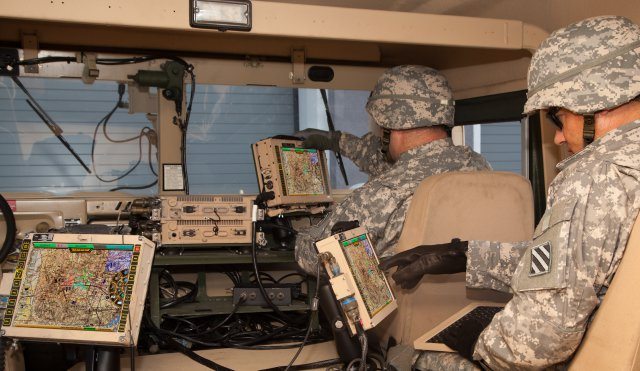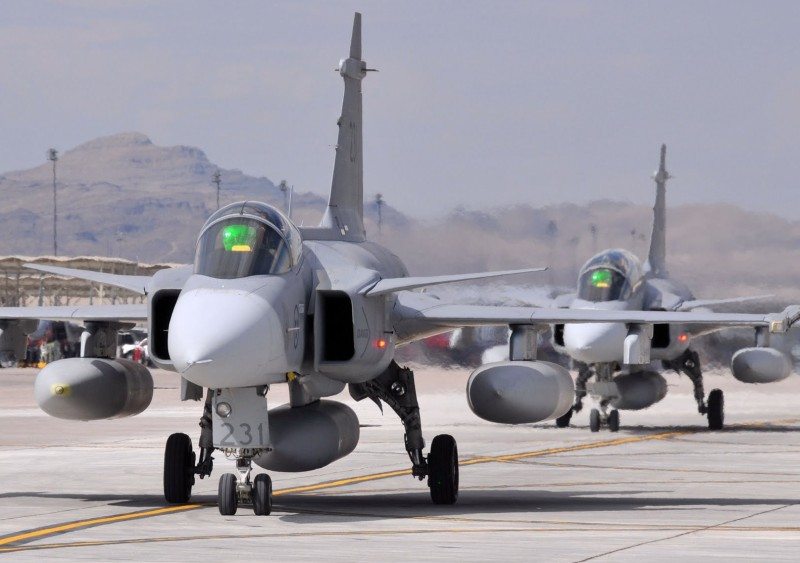In combat and tactical vehicles, Soldiers can access communications systems that display a complete picture of the battlefield. However, these high-tech situational awareness features are viewed through different computer systems, over separate monitors and with little room to spare.
Now the Army is looking to replace that “swivel chair” approach to situational awareness by introducing a standardized family of tactical computers that are scalable and tailorable to the mission and vehicle. With a modular “build-your-own-system” computer, users will be able to access and operate several different software applications over a single piece of computer hardware.
Known as the Mounted Family of Computer Systems, or MFoCS, the new capability will bring interoperability to tactical computers and improve the Soldier experience by allowing them to better plan, monitor and execute missions.
“By offering basic through advanced computing and display capabilities, we can satisfy the needs of several mission command applications while eliminating the burden of operating different computers in the same vehicle,” said Dominic Satili, deputy product manager for Blue Force Tracking, assigned to Project Manager Joint Battle Command-Platform, or PM JBC-P. “The Soldier only has to learn how to operate one computer.”
In June, PM JBC-P, assigned to the Program Executive Office for Command, Control and Communications-Tactical, awarded a three-year, indefinite delivery/indefinite quantity contract for production and development of MFoCS to Florida-based DRS Tactical Systems Inc.
The building block approach introduces three MFoCS models: the basic, intermediate and advanced. The basic configuration is a tablet, while the intermediate model adds a processing unit with a 12, 15 or 17 inch display. The advanced model includes not only the tablet but also two intermediate units for a total of three work stations, making the three MFoCS models interchangeable and easily customized to fit any mission. The tablets are ruggedized and operate on a 25-foot cable so Soldiers inside a vehicle can pass the display around or even detach it and take it outside.
“The vision here is to have a single tactical computer for Army vehicles that will run multiple applications,” Satili said. “This standardizes the type of computer and at the same time creates a family of different sizes that adjusts to the mission.”
Designed to run JBC-P, the Army’s primary situational awareness capability, the system will also support other command, control, communications, computers, intelligence, surveillance and reconnaissance applications and provide mounted computing solutions for the Marine Corps.
By allowing multiple software programs to utilize a single hardware solution inside the vehicle – rather than requiring individual hardware — it also reduces size, weight and power demands. MFoCS not only brings interoperability to tactical computers, it also reduces the cost of the basic configuration computer by as much as 36 percent and boosts its performance by more than 350 percent.
Development of M-FoCS dates back to a 2011 Army Directed Requirement for a common computing hardware solution with the goal of converging separate computing environments onto a single architecture.
MFoCS fits in the same hardware footprint and uses the same installation kit as the existing Force XXI Battle Command Brigade and Below/Blue Force Tracking and Joint Capabilities Release systems. These technologies are the situational awareness predecessors to JBC-P and have been integrated on more than 120,000 platforms, reside in each tactical operations center and are fielded to every brigade combat team in the Army.
Moving forward, MFoCS will support PM JBC-P’s Mounted Computing Environment, or MCE, one of six computing environments that are part of the Army-wide Common Operating Environment, or COE. The COE strategy embraces a commercially-based set of standards that enable secure and interoperable applications to be rapidly developed and executed across the computing environments.
“The Army is streamlining product development with COE,” said John Gillette, PM JBC-P team lead for MCE. “MCE will be the standard for systems inside tactical vehicles, while MFoCS will serve as the hardware solution for the Army’s MCE.”
Once established, the COE will allow the Army to develop, test, certify and deploy software capabilities efficiently with reduced development costs, while also encouraging competition.
The first delivery of MFoCS computers, which will be used for integration and testing, is expected within 20 weeks of the contract date.
The quick turnaround reflects PM JBC-P’s initial request for proposal requirement that vendors submit a prototype basic tablet and intermediate computer for evaluation as part of the full and open contract competition.
“We didn’t want them to tell us about it in writing; we wanted them to prove it also,” Satili said. “Our acquisition strategy resulted in an MFoCS vendor able to deliver mature production representative computers which meet the original directed requirement from the Army G-3/5/7.”











